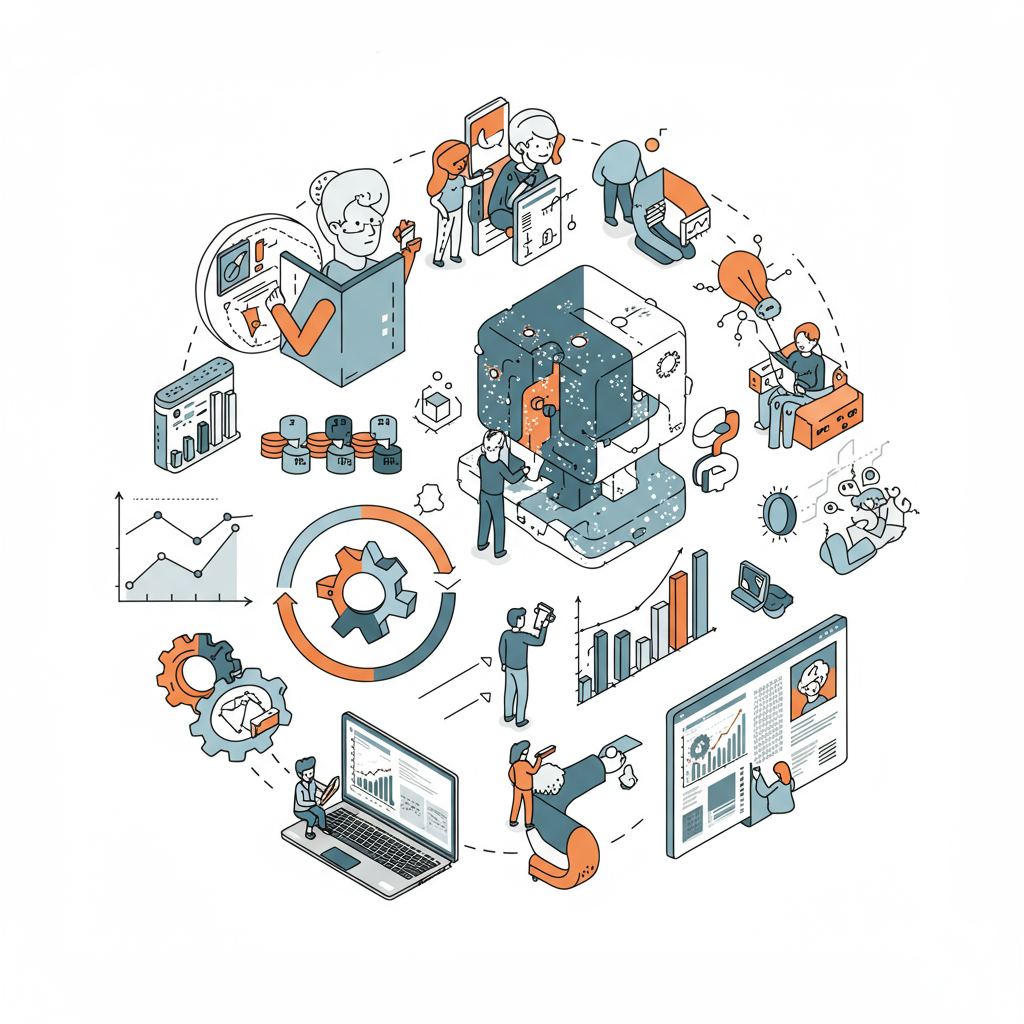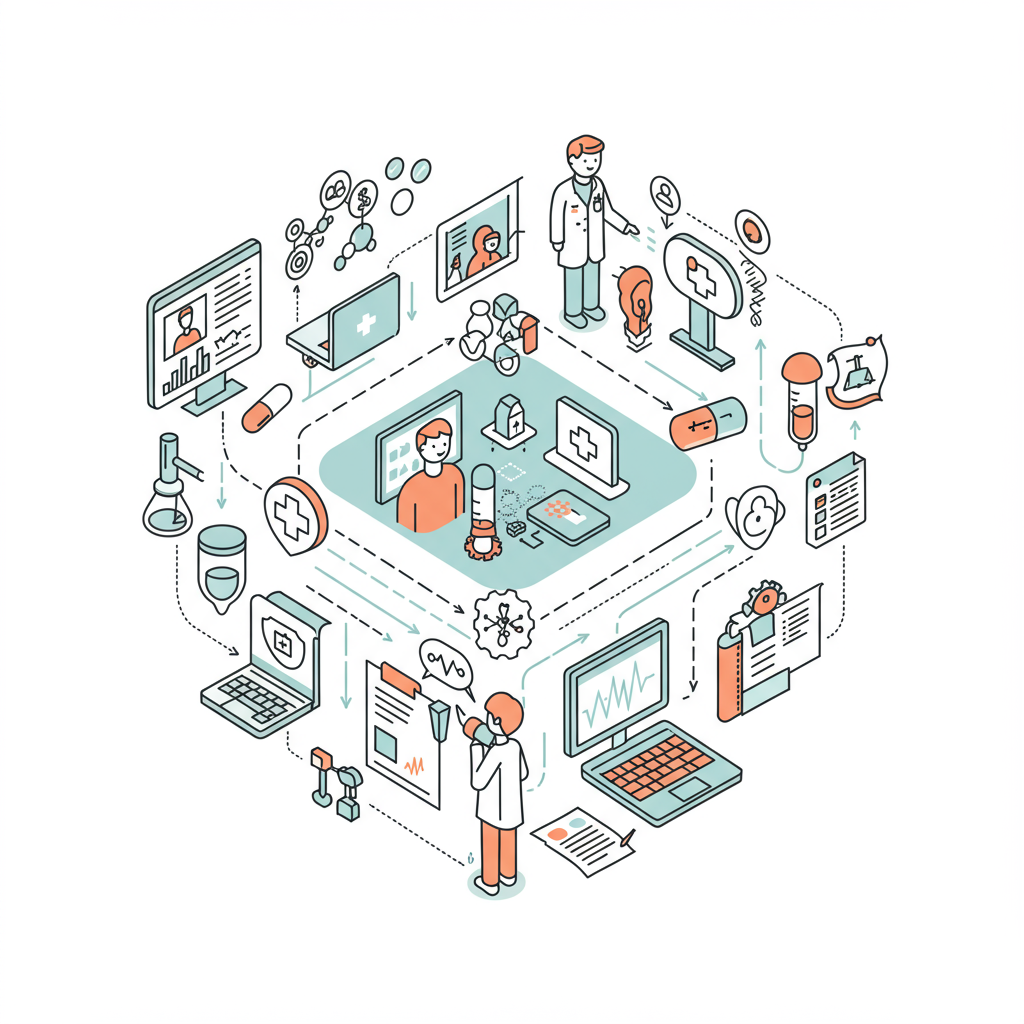Co-Creation: The Future of AI Innovation
Unlock AI innovation through co-creation from strategy and roadmaps to real-world use cases, guided by expert consulting teams.

Artificial intelligence has quickly evolved from a futuristic concept into an everyday business tool. Yet, while the technology is powerful, the way organizations choose to design, deploy, and scale AI determines whether it creates meaningful value. Increasingly, companies are learning that the best outcomes come not from building in silos, but from engaging in co-creation.
Co-creation is the practice of involving multiple stakeholders, customers, employees, startups, or external experts in the design and development of solutions. In the world of AI innovation, this approach is proving to be both practical and transformative.
With help od an AI strategy tool/partner any business can now takepart in the AI co-creation process.
What Does Co-Creation Mean in AI?
Unlike traditional development processes, where user feedback is collected after a product is nearly finished, co-creation integrates stakeholders throughout the lifecycle. That means users and collaborators are part of ideation, prototyping, testing, and iteration.
In AI, this approach is particularly valuable because the technology often evolves rapidly, and its impact is deeply tied to how humans interact with it. For instance, people generate more creative ideas when they co-create with AI compared to when they simply edit machine-generated outputs. By blending machine efficiency with human imagination, co-creation drives richer and more reliable AI innovation.
Learn from real-world AI integration strategy reports to understand the scope of AI, and leverage the technology to its full potential.
Startups and Enterprises: Why Collaboration Matters
One of the strongest arguments for co-creation comes from the startup-enterprise dynamic. Startups often experiment with bold ideas, move quickly, and pivot easily. Enterprises, on the other hand, bring stability, capital, and access to large-scale distribution.
Through co-creation, startups and enterprises can achieve outcomes neither could deliver alone. For example, startups can plug into an enterprise’s resources, while enterprises gain access to agile innovation. Industry leaders highlight that such collaborations help unlock new AI use cases that are both scalable and relevant across industries. This combination of creativity and scale is why co-creation is becoming the foundation of sustainable AI innovation.
Another compelling benefit of co-creation is how it democratizes AI. Instead of restricting development to data scientists or engineers, it invites diverse voices such as citizens, frontline workers, and even students into the process.
Plan your use-cases and co-create with our experts.
Balancing Human and AI Roles
Human-AI co-creation is not without challenges. One critical factor is deciding how much autonomy the AI system should have versus how much control remains with humans. Frameworks like MOSAAIC (Managing Optimization towards Shared Autonomy, Authority, and Initiative in Co-creation) guide balancing these roles.
The goal is not to replace human decision-making, but to design workflows where both humans and AI contribute strengths. AI can handle repetitive data-heavy tasks, while humans provide context, ethics, and creativity. Striking this balance is key to building trust in AI systems and ensuring responsible adoption.
Co-Creation in Education and Learning
Co-creation also extends into education. Schools and universities using AI as a co-creator in classrooms report that students build stronger creative confidence and ownership over their work. Instead of seeing AI as a shortcut, students learn to collaborate with it as a partner.
Similarly, organizations experimenting with “living labs” create environments where end users continuously test and refine solutions. By embedding real-time feedback loops, these labs ensure that AI applications align closely with user needs and expectations.
The Role of Strategy in Co-Creation
While the value of co-creation is clear, implementing it effectively requires thoughtful planning. Companies need structured processes to ensure ideas move beyond brainstorming and into scalable, production-ready systems. This is where AI strategy consulting plays an important role.
Consultants can help organizations design AI roadmap services that define co-creation milestones, identify the right stakeholders, and measure outcomes. An AI strategy consulting tool can also help prioritize which ideas to test first, assess feasibility, and align resources. For execution, working with an AI implementation partner or a dedicated AI consulting team ensures the co-creative vision translates into working systems without losing momentum.
Case in Point: Pinterest’s Internal Co-Creation
A powerful real-world example of co-creation comes from Pinterest. Through its internal Makeathon program, employees across departments, including nontechnical staff, collaborate to build AI tools. One notable outcome was a chatbot that now answers thousands of employee queries each month. This solution wasn’t built by data scientists alone, but by employees using no-code tools in a collaborative environment.
This success demonstrates how co-creation not only accelerates adoption but also boosts employee engagement. By involving people directly in development, organizations reduce resistance to change and create tools that solve practical problems.
Benefits of Co-Creation for AI Innovation
Organizations that embrace co-creation can expect a wide range of benefits:
- Faster adoption as solutions built with user input face fewer adoption barriers
- Higher relevance for end users to ensure that products solve real challenges
- Scalable innovation with co-created pilots replicated more easily across regions and industries
- Cost savings as early feedback prevents wasted investment on unwanted features
- Ethical grounding with diverse stakeholder involvement reduces bias and improves fairness
When combined with structured planning from AI strategy consulting and the expertise of an AI consulting team, co-creation ensures AI deployments deliver measurable results.
Challenges to Address
Of course, co-creation isn’t without its hurdles. It requires cultural openness, a willingness to experiment, and a mindset shift from top-down development to collaborative design. Organizations must also invest in infrastructure that supports ongoing collaboration, such as digital platforms for feedback, transparent data sharing, and effective communication across teams.
Security and governance also remain important. Co-creation involves multiple contributors, which makes data privacy and compliance critical. That’s where partnering with an experienced AI implementation partner can help balance speed with responsibility.
Looking Ahead: Co-Creation as a Competitive Edge
As AI becomes central to business strategy, the companies that succeed will be those that treat it not just as a technology but as a collaboration engine. Co-creation offers a competitive edge by fostering continuous innovation, aligning products with real needs, and ensuring sustainable adoption.
By integrating AI roadmap services, tapping into AI use cases, and leveraging tools and expertise from consulting teams, businesses can embrace co-creation as the future of AI innovation.
Conclusion
AI is no longer about what machines can do alone; it is about what humans and machines can create together. Co-creation makes AI more inclusive, relevant, and impactful. Whether through community projects, startup-enterprise partnerships, or internal hackathons, it unlocks ideas that might otherwise remain unexplored.
Organizations that embrace co-creation, supported by AI strategy consulting and expert implementation, will not only accelerate their AI innovation but also build systems that are trusted, human-centered, and future-ready.
If you are looking for the best AI integration consulting services, talk to us today. Visit our website for more information.



